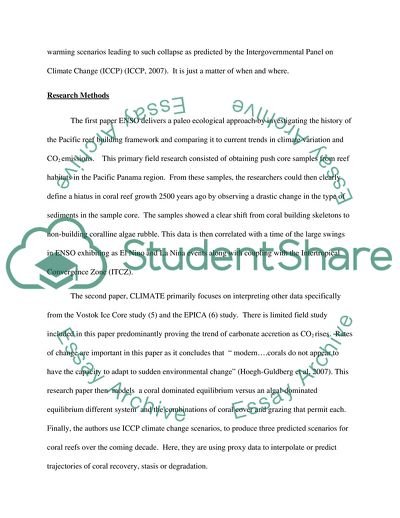Cite this document
(The Global Warming and Coral Reefs Report Example | Topics and Well Written Essays - 1500 words, n.d.)
The Global Warming and Coral Reefs Report Example | Topics and Well Written Essays - 1500 words. https://studentshare.org/physics/1869795-analysis-of-two-research-papers-on-global-warming-and-coral-reefs
The Global Warming and Coral Reefs Report Example | Topics and Well Written Essays - 1500 words. https://studentshare.org/physics/1869795-analysis-of-two-research-papers-on-global-warming-and-coral-reefs
(The Global Warming and Coral Reefs Report Example | Topics and Well Written Essays - 1500 Words)
The Global Warming and Coral Reefs Report Example | Topics and Well Written Essays - 1500 Words. https://studentshare.org/physics/1869795-analysis-of-two-research-papers-on-global-warming-and-coral-reefs.
The Global Warming and Coral Reefs Report Example | Topics and Well Written Essays - 1500 Words. https://studentshare.org/physics/1869795-analysis-of-two-research-papers-on-global-warming-and-coral-reefs.
“The Global Warming and Coral Reefs Report Example | Topics and Well Written Essays - 1500 Words”. https://studentshare.org/physics/1869795-analysis-of-two-research-papers-on-global-warming-and-coral-reefs.


